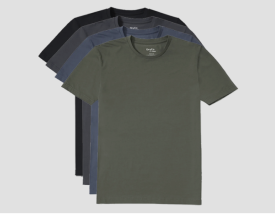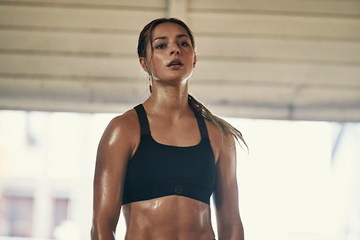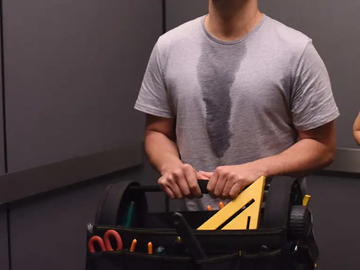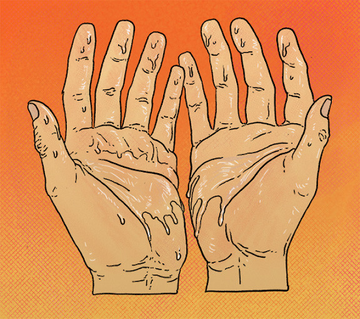Chafing - it’s every runner’s nightmare. It’s every active person’s nightmare. Heck, it’s a nightmare for everyone, whether you’re a hardcore fitness buff, a weekend warrior or a couch potato. The irritation of chafing is enough to make you fear wearing your fabric, but there’s lots you can do to prevent chafing from wreaking havoc. This post will take a look at the “mechanisms” behind chafing and how you can combat it.
Causes of chafing
Chafing occurs when your skin rubs against something excessively, creating friction which then leads to irritation. This can happen when your skin rubs against clothing or other areas of skin (ie. thighs rubbing against each other). Sweat makes this worse because the wetness and salt of sweat will cause stinging. People who sweat more or excessively are more likely to experience significant chafing. You may experience chafing if you fall into one of the following categories:
- Endurance athletes - If you’re a runner or cyclist, the repetitive cadence of these activities may cause chafing. This can happen when your skin rubs against sporting gear or if you sweat heavily.
- Hyperhidrosis sufferers - Excessive sweating itself may not cause chafing, but the heavy sweating may aggravate already irritated skin and make the sensation worse.
- Nursing women - Breastfeeding mothers often face the dilemma of chafed nipples all too often. Sweat, not to mention wearing a bra, can intensify the sensation.
- Clothing choices - Poor-fitting clothes such as sleeves, bras, or waistbands can rub against your skin and cause chafing. Also, all of you who wear skirts, beware: if your inner thighs rub together in hot or humid weather, the friction can lead to chafing as well.
Prevention of Chafing
Truth be told, you’re better off preventing chafing than treating it. It’s not hard to treat, really, but you can save yourself a lot of hassle with a few preventative steps.
Since we’re in the business of managing sweat, we’ll start there. Sweating is completely normal and necessary depending on what you’re doing, but too much can make chafing worse. So you should try to keep a little drier. Our two recommendations for keeping sweat under control are moisture-wicking shirts and antiperspirants.
Moisture-wicking shirts
Moisture-wicking shirts can ward off all sorts of torso chafing, whether that in the back or chest (nipples). First off, moisture-wicking shirts pull sweat from the skin onto their surface, where it evaporates. This helps you stay cool and dry faster compared to other shirts, and there will be less stickiness as a result. Second, the fabrics in these sweat-proof shirts are also soft, so they won’t rub against the skin as much.
Antiperspirant
If you sweat heavily from the armpits, consider using a prescription-strength antiperspirant. Not only do they block sweat - which leads to less stickiness - many of them also contain moisturizers to protect the skin from irritation.
There are also a few other factors to consider as well. If you go swimming, it’s important to take your swimsuit off quickly after swimming. The same goes for any article of clothing you’ve worn in the rain or during some water activity. The longer you keep tight, wet fabrics on your skin, the more likely it may chafe. Also, if you’re going to participate in an outdoor activity in hot weather, expect to sweat. You may opt to do your activity during a cooler hour. Or, you’ll want to choose clothing that’s light, somewhat loose, and breathable.
Lotions & Lubricants
Certain creams and oils can reduce friction, so even when your skin rubs against something else, it won’t get irritated. Just beware of using lotions or lubricants that may cause other forms of skin irritation. This may take some trial and error.
Bandages & Pads
Since it’s the direct skin-to-skin or skin-to-cloth contact that causes chafing, it would help to add a protective layer. That’s where a soft bandage comes in handy. You simply place the bandage in an area that’s susceptible to chafing, so that it reduces the friction. This also applies to nursing moms. You can use a soothing pad in your bra to prevent nipple chafing caused by friction of skin rubbing against the fabric.
How Do You Treat An Existing Case of Chafing?
The cliche “time heals all wounds” applies here. Chafing naturally will disappear on its own - you just have to give it time and stay away from the source of irritation. Of course, this can be tricky for some of you. If you’re very active and have to train or wear certain gear, then chafing may seem inescapable.
Ideally, the best “treatment” would be to avoid certain articles of clothing or modify your activity but if you can’t, you still have options. You can use a soothing cream or moisturizer to help combat the irritation so you don’t feel it as much.
Or in severe cases, you can visit a dermatologist as they may prescribe you a topical medicinal agent that may provide more relief. A dermatologist may also investigate to see if you have an underlying skin condition that’s adding to your irritation.
But keep in mind that these are largely temporary solutions - you will heal best by limiting your exposure to the source of irritation.
Skip to the Chase, Say Bye to the Chafe
Chafing is one of those afflictions that so many of us put up with, but don’t have to. It’s not a skin disorder - it’s just a form of irritation with an easily avoidable cause. Many of the methods listed in this article can help you avoid chafing altogether.
You may need to try a few different ones or some combination of them, but you’ll likely find relief sooner or later. Rest assured that chafing doesn’t have to be a necessary evil!
Looking for sweat-proof, moisture-wicking fabrics that can help you feel and look dry? Check out our line of sweat-proof t-shirts made with patented technology to help you dry off fast!







